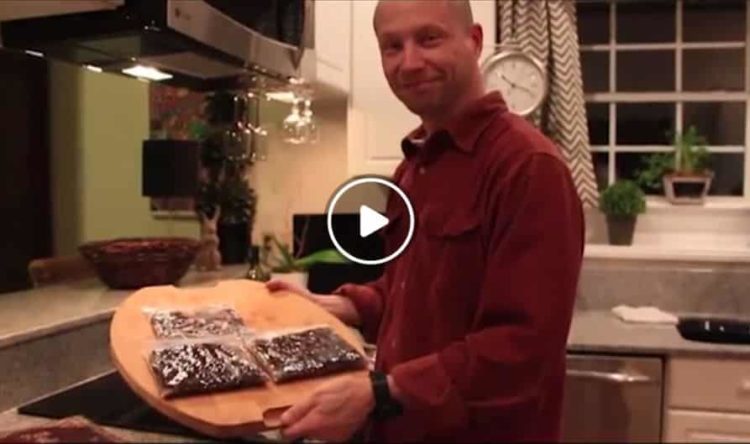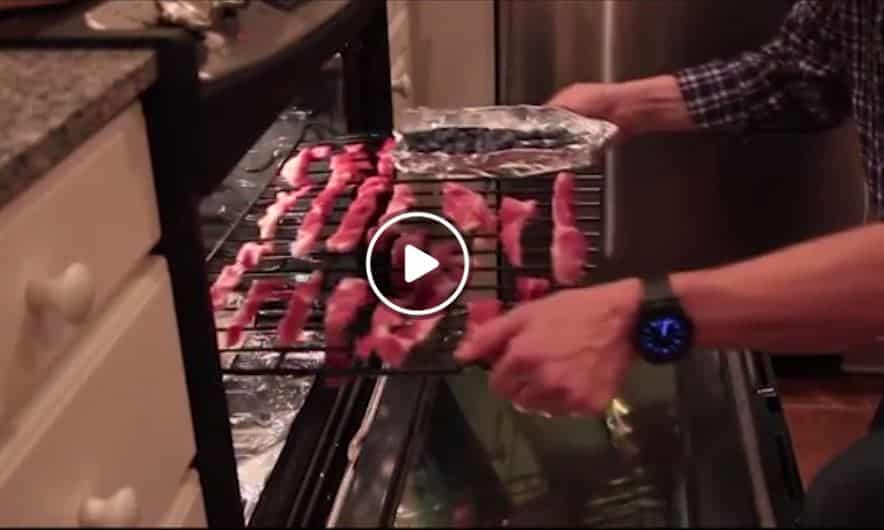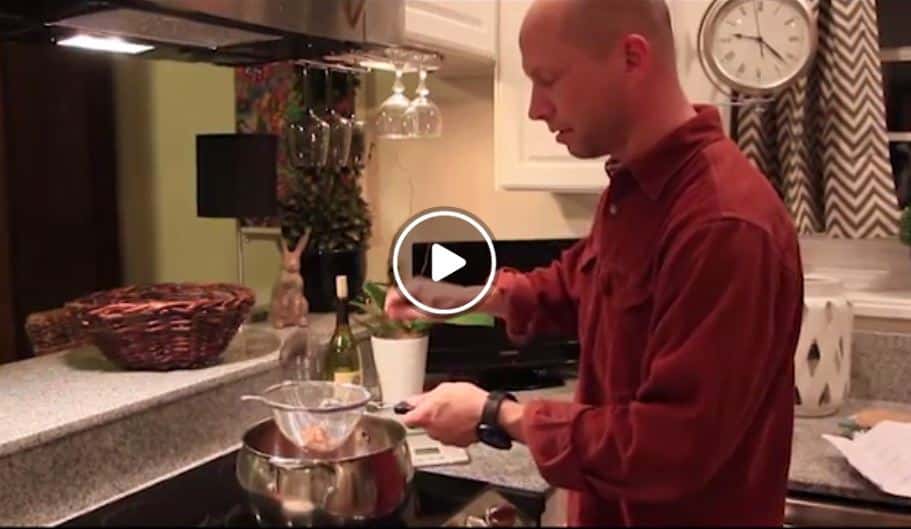 Our Simple, Easy To Follow, Step-By-Step Pemmican Recipe
Our Simple, Easy To Follow, Step-By-Step Pemmican Recipe
For Native Americans, developing the process of how to make pemmican was all about survival.
They created some of the most useful survival skills ever devised.
Fortunately, much of their survival knowledge is still known today.
One such survival resource, invented by the Cree Native American Tribe, is what we call Pemmican:
Pemmican: History’s Power Bar
The word Pemmican stems from the Cree word for “fat” or “grease.”
And pemmican is one of the best survival foods you can make at home. It’s considered by many experts to be a survival superfood.
Why? Because it lasts for years, even decades, without spoiling.
Pemmican is jam-packed with proteins and good fats to provide long-lasting energy. It’s easy to make. It’s made out of almost any meat. And on top of all that, it tastes pretty damn good, too.
Pemmican is a perfect survival snack to stash in your bug out bags, survival kits, and survival food storage. Any serious survival food cache without an ample supply of pemmican is lacking.
But beyond just having some, knowing how to make pemmican is a survival skill that could save you from starvation.
In any food emergency, if you know how to make pemmican, you’ll weather nearly any storm, just like the Native Americans who developed this super-snack so many ages ago.
Are You Ready For The Tough Times Ahead? Take My 60 Sec Quiz To See If You’re Part Of ‘The Fragile Masses’ Or Not… Start Quiz Now!
A Brief History of Pemmican
Pemmican is 100% meat, but it’s NOT beef jerky.
The snack was popular among the Natives because it was easy to make, transport, and long-lasting. They traditionally made theirs from wild game such as venison, elk, and moose meat.
After Europeans arrived and tasted it, they quickly adopted the pemmican recipe and began making it themselves.
Fur trade merchants also adopted pemmican. They made it famous as a substantial and hardy survival food, spreading its popularity.
Today, these hundreds of years later, we still use this superfood in much the same way – and for all the same reasons.
Any pemmican recipe that’s stood the test of time without being changed from its original form is good stuff.
How To Make Pemmican
There are more pemmican recipes out there than one could count.
It’s been passed down for several generations, so it’s one of those recipes everybody makes a little differently. It’s an old-world food, and everyone has a special family pemmican recipe.
But no matter what you add to your pemmican recipe, the core process of making it is always the same.
So for that purpose, what follows are the bare-bones instructions for processing meat into pemmican.
We’ll get to a few of the fancy additional ingredients in the next section.
As A Way To Introduce You To Skilled Survival, We’re Giving Away Our Family First Food Planning Guide. Click Here To Get Your FREE Copy Of It.
The Step-By-Step Process To Making Pemmican
For those who would rather see how pemmican is made instead of having to read instructions, watch this excellent “how-to” video.
Video Instructions On Making Pemmican
1. First, you need to get your hands on some meat.
It could be caribou, venison, elk, moose, beef, or any meat with natural fat.
Rabbit and fish won’t work because they are too lean and won’t provide the fat you need later on.
2. Dry your meat.
Cut off, save all the fat, and slice the leftover fat-less meat into thin strips.
Those strips can then be dried under direct sunlight or in your oven on the lowest heat. Dry the thin meat strips until they’re brittle enough to crack when bent.
3. Grind the dried meat strips up.
Food processors work best for this. But without one, you can also mince the meat pieces with a knife and then grind them in a blender.
If you are in an actual survival situation and do not have access to electricity, your best bet is a mortar and pestle. Or even just two rocks if you have nothing else.
The meat must be ground as fine as possible; think “fine meat dust.”
4. Process the fat you saved in step #2.
Put it all in a pot over low heat. Once the fat has melted and begun to boil, strain it through a mesh strainer.
5. Mix dry extras and meat in a separate bowl.
We’ll discuss what dry extras you can use later. For now, this is the time to mix all those dry ingredients in a bowl with your ground-up meat dust (leaving room for the fat).
6. Add the fat to your bowl of dry ingredients and meat.
Simply pour it over the dry stuff and start mixing.
7. Mix in any wet extras (see the next section for details).
8. Begin forming this mixture into larger pemmican bars.
One popular way to do this is to take a shallow pan and pour in the mixture while it’s still soft.
Let the mixture settle and smooth it out. When the mixture has dried, cut it into smaller bars for storage.
Again, here’s my recommended “how to make pemmican” video instruction:
How to Make Pemmican – A Survival Super Food Recipe
A Few Pemmican Recipe Variations
As just meat and fat, pemmican bars are still pretty tasty. And more importantly, for survival, ready to provide lots of energy and long-term storage.
But it’s always tasty to mix things up. And if you can make your pemmican taste even better with very little extra work, why wouldn’t you?
As mentioned in the previous section, there are two types of extra ingredients you can add to pemmican:
- Dry ingredients
- Wet ingredients
Unfortunately, you should never add anything fresh. That may sound odd to some, but adding fresh ingredients (like ripe red tomatoes, for example) will compromise the shelf life.
Everything you add to your pemmican recipe must also have a long shelf life as well.
Dry Ingredients
Dry ingredients include anything with very little moisture. This opens the door for many pemmican recipe variations because you can dehydrate (dry) just about anything.
Dry ingredients are mixed in during step #5 above – some people like the taste blend of meat and berry.
Here are a few ideas to consider:
- Dried fruits: mangos, blueberries, raspberries, bananas, apples, kiwis, pineapples, tomatoes, grapes, chilies, etc.
- Dried nuts: peanuts, almond meal, walnuts, chestnuts, pinion nuts, etc.
- Spices/Flavors: paprika, chili powder, onion powder, garlic powder, dried basil, dried oregano, dried rosemary, coconut oil, etc.
Wet Ingredients
As the name implies, anything that is not dry falls into this category.
Wet does not mean fresh, though – do not get that mixed up.
Adding fresh ingredients to your pemmican will drastically shorten its shelf life. Wet ingredients are added during step #7 above.
Wet ingredients you might add to pemmican bars could include (but are not limited to):
- Caramel, syrup, honey powder, molasses, vanilla extract, etc.
Don’t be afraid to get creative with your pemmican. There are a lot of options to customize the pemmican bars you make. You can make them sweet and tangy or hot and spicy.
Trying different flavors of pemmican serves three purposes:
- Enhances the flavor value of the bars.
- It lets you explore which flavors you like best (and how much of each).
- It allows you to practice making different batches
Note: Practice makes perfect. Your first homemade pemmican bars likely won’t taste as good as your tenth batch.
Storing Your Pemmican For The Long Haul
So, let’s say you’ve successfully made a ton of incredibly delicious pemmican bars. Now what?
Storage! Properly storing your pemmican is crucial to make sure it lasts for a very long time.
It can “go bad” relatively quickly if stored incorrectly and carelessly. However, it can last for decades when stored with care and precision.
One truth about food and food storage is this: food poisoning sucks and can be dangerous.
If you’re ever in a survival situation with nothing to eat but the food you stored years ago, you better pray you stored it correctly. Getting food poisoning during a survival situation is like signing your death warrant.
First off, pemmican must be stored in airtight containers. Vacuum-sealing these protein bars in plastic bags is highly recommended. Vacuum sealing ensures the highest quality storage by removing as much oxygen as possible. But zip locks and Tupperware can also work well.
Mold needs only a few key ingredients to grow. One of them being oxygen. So by eliminating the oxygen, you remove the potential for mold growth.
The location you store your pemmican must be cool, dark, and temperature controlled. Light and heat will negatively affect your supply of pemmican.
Basements and pantries will work, but my favorite is an underground food storage facility.
Make sure to store it off the ground; this keeps it away from moisture and hungry critters.
What does 3-year-old Pemmican Taste like?
Reasons to Master The Art of How to Make Pemmican
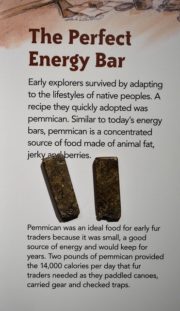
It’s all about self-reliance.
No matter what the world throws at you, you’ll know how to make more and can rely on it over long periods.
It’s lightweight and easily transportable; you can make it anywhere with relatively few ingredients.
You do not have to use it for emergencies only, either. Pemmican is a great snack for all sorts of outdoor adventures:
- Hunting Trips
- Backpacking Trips
- Fishing Expeditions
- Mountain Biking
- Day Hiking
- Camping
- Road Tripping
- Kayaking
- Mountain Climbing
- Etc.
No matter what you are doing – if it’s athletic, it’s a great snack to keep you going.
There are also economic benefits to knowing how to make pemmican. First of all, if you get great at it, you can start selling it.
Who knows, maybe you’ll break into the market as the world’s finest pemmican chef. But also, if IT really does hit the fan, this food will become a valuable currency for bartering.
People will want them, that is for sure. So if you have a way to make them yourself, you could corner the post-economic market for pemmican bars. It would be like minting your own money right at home.
The Lost Ways – A Pemmican Tutorial Guide
The Lost Ways website has an awesome step-by-step “how to make Pemmican video.” While a written guide is important and helpful to many people, watching a video guide is even better.
They cover a few things I did not and demonstrate how to make your own pemmican:
Making Pemmican – Step-by-Step Guide
Watching how someone else does it is helpful even if you’ve made pemmican before. You might learn a few tricks you did not know prior.
For novices, I would highly recommend watching the video.
The video details how much meat to use, how much fat you need, and what else to add to your pemmican recipe.
He makes it all in his kitchen, which is good to see. You don’t need an entire meat workshop and drying facility to make tasty pemmican protein bars. All you really need is the will!
With everyday kitchen tools, he takes us through the entire process of how to make pemmican. If any of the instructions in this article are written “How To” section was confusing, watch the video below!
Plus, they go a little deeper into the history and culture of this superfood, so if you’re interested in knowing more about how the native Americans made pemmican, this video is for you.
The Final Word
I will say it bluntly and not mince words – pemmican is one of the best survival foods.
Let’s recap:
- If stored and made properly, it can last for up to 50 years and still be fresh and tasty
- It provides boatloads of protein and fat energy, which will burn long and last you all-day
- You can make it from a large variety of wild game
- It’s lightweight and easily packable and transportable
- You can make it cheap, and it requires very few ingredients
- It’s incredibly easy to make and can be done in your kitchen right at home
Any survival food cache without a supply of pemmican is incomplete. It’s such a useful and efficient food; every survivalist should scramble to get their hands on some (or better yet, make some).
If you get a good supply at the ready, you’ll be ready for survival situations and food shortages – no matter what.
Knowing how to make pemmican is like learning how to fish – once you figure it out, you can feed yourself almost anywhere.
Give a man a pemmican bar, and he has the energy for the day. Teach a man how to make pemmican; he has energy for life.
Also, you might want to check out our article on how to identify, process, and grow wild lettuce.
Will Brendza
P.s. Are you ready for the tough times ahead?
Find out now by taking my short Readiness Score Quiz – it’s absolutely free.
Once complete, you’ll know exactly where you stand on the “fragile” vs.” resilient” spectrum.
So click here to start the Quiz….And don’t worry; the questions are so easy a 3rd grader could answer them.
Click on the image to begin the Quiz and find out once and for all if you’re part of “The Fragile Masses” or “The Resilient Few.”
Header Image Source
The post How to Make Pemmican: Survival’s Best Super Food appeared first on Skilled Survival.


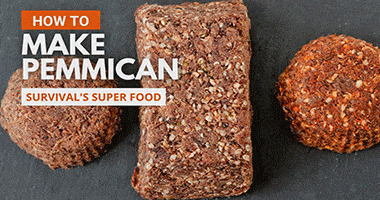
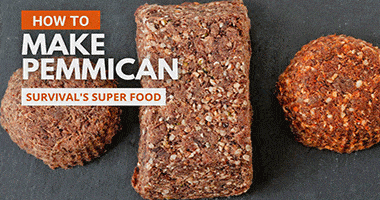 Our Simple, Easy To Follow, Step-By-Step Pemmican Recipe
Our Simple, Easy To Follow, Step-By-Step Pemmican Recipe

